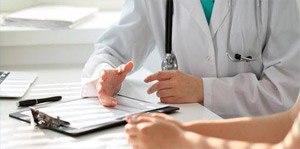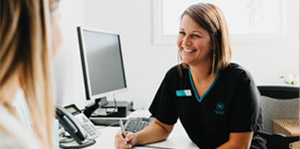Gastroscopy
Gastroscopy is a visual examination of the lining of the upper part of your digestive tract i.e. oesophagus (food pipe), stomach and duodenum (first part of the small intestine). A gastroscope (long, flexible tube with a small camera on the end) is passed through your mouth and down your digestive tract. Images from the camera are displayed on a video screen and photos can be taken. The endoscope (tube) will not interfere with your breathing. The doctor can look for any abnormalities and if necessary take a small tissue sample (biopsy) using tiny biopsy forceps. This is painless and the tissue sample is sent to the laboratory for examination under a microscope.
Gastroscopy examination may be used to investigate and diagnose:
- Indigestion, heartburn, reflux
- Any changes in bowel habit
- Bleeding, anaemia
- Nausea
- Swallowing difficulties
- Pain and/or abdominal discomfort
- Peptic ulcers or gastritis
- Coeliac disease
- Growths or tumours
Complications from a Gastroscopy examination are very rare but can occur. They include:
- A tear (perforation) and/or bleeding from the oesophagus, stomach or duodenum may occur, especially after endoscopic therapies such as biopsies and polypectomy or dilatation
- Allergic reaction to the sedative or throat spray
- If you would like further clarification of these complications, please discuss them with your specialist or nurse
What Happens?
The stomach must be empty to obtain a clear view. Therefore you are asked not to eat or drink anything for 6 hours before the examination (including water).
In addition it is important to inform Waitemata Endoscopy prior to your procedure if you have any of the following:
- An allergy or bad reaction to medicines or anaesthetics
- Take medication to thin your blood including dabigatran/pradaxa, clopidogrel, or warfarin
- Prolonged bleeding/clotting disorders or excessive bleeding
- Diabetes
- Heart and lung problems including artificial heart valves and pacemakers
- Artificial hip or knee joint replacements
- Are pregnant or breast-feeding.
On admission into Waitemata Endoscopy your medical history is recorded by a nurse and the procedure explained. A consent form is discussed and you are requested to sign it, indicating that you understand the procedure and complications and give consent to have the procedure performed.
In the procedure room the back of your throat will be sprayed with a local anaesthetic spray, this has a bitter taste and makes the back of your throat and tongue numb. You will also be offered a sedative, which will relax you, and possibly make you drowsy for the procedure. This will be given by a small injection into a vein in your arm or hand. The gastroscopy will take approximately 10 to 20 minutes.
You will spend some time in the endoscopy recovery room after the procedure (probably 1-2 hours) to sleep off the sedative and to allow staff to monitor you. Because you will also be offered a sedative, which will relax you, and possibly make you drowsy for the procedure, it is important that you know that you should not drive a car, operate machinery or make any important decisions for 12 hours as the sedation impairs your reflexes and judgement. Therefore you will need to arrange for someone else to drive you home and it is recommended that you have an adult at home with you afterwards. You are unable to take public transport alone.
If biopsies or polyps are taken for examination, your GP and specialist will be sent the results. Your specialist will review the results and will send you a letter, which may take up to 2-4 weeks depending on when the sample results are received from the lab. A medical typed report will be sent to your GP and the specialist. Follow-up information and recommendations will be given to you by the specialist prior to discharge from Waitemata Endoscopy.
For a copy of our brochure, please download the PDF here.



